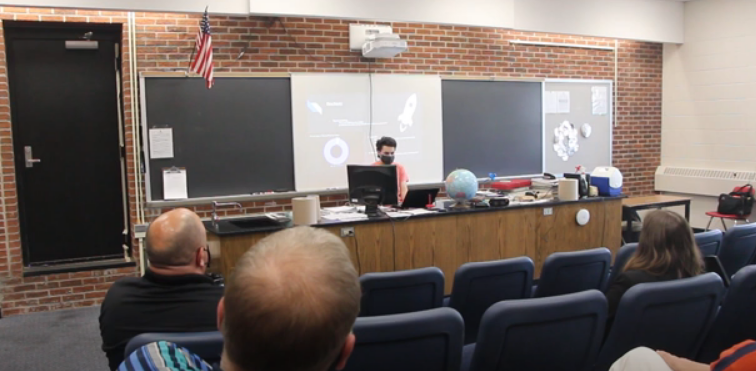Project Process

Time Management Plan
https://docs.google.com/document/d/1rNXxf5-Nh2OG9g2gjsLm2foub5gHrOym5LEuhL-cEa0/edit?usp=sharing
Attachments

Budget - Materials List
1. Plastic (for 3d printing objects)
2. Metal wires
3. Globe
Attachments

Personal Growth
On February 18, 2021, NASA's rover dubbed Perseverance, landed successfully on Mars. The rovers name was and is much more than just a name. They named the Perseverance for the struggles and effort its engineers have put into to create the rover. It became even more apparent when the world went into lockdown, forcing them apart and putting another burden on those producing the rover.
While I can't say that I've made a rover during the pandemic, I can saw that I've had much perseverance. When I first started my project, I was faced with a daunting task. I had to research something I had little information on or knowledge of, I had to create some sort of simulation or experiment to test my project, I had to develop a model of a space tether, and calculate and develop the physics of a tether in low earth orbit.
By persevering though, and taking it one step at a time, I've been able to create, develop, and finalize my project.
For more examples of how I have grown in character and critical thinking skills, please see my blog post tags.
Learning Stretch
This whole project has pushed me to the max. I've never done a big year-long project like this on my own before. I've had to do all the research, the develop, and the experiment all (mostly) on my own. By developing my project step by step, however, I've been able to complete my project.
I had only just started to learn how to do physics calculations when I began my project. As my school year went on, however, I began to learn more about physics, as well as talked with my teacher about the physics of a possible tether in low-earth-orbit. Now I know how to calculate the altitude of an object in low-earth-orbit given the right information.
I've gone outside my comfort zone when when I began calculating the physics calculations of a space tether, as I had only just begun my Physics class at the beginning of the year. I've also gone outside my comfort zone by creating posts regularly about my project. I'm not a very online social person, so it's been a little tricky starting the habit. I took a big risk launching this project, as much stuff I need to do I haven't done before or know how to do.
For my project, creating an experiment would have been extremely hard to impossible, as my project is about an object in the vacuum of space. So, a simulation was in order instead. Much of my calculations and math to show a tether in low-earth orbit I've never done before, and I'm only half-way through my first class about physics, so this has been quite the learning stretch for me.

Community Outreach
On May 12, I was able to present my project to several science teachers in the school. I presented my idea, each part of my project, including experiment, prototype, and how the concept works.
Afterwards, the teachers asked questions, which I answered and elaborated. After I gave my thanks to them and allowed them to leave, a couple came up to me to give me advice about my presentation and my prototype. I hope I can use all of this to my fullest! Crossing my fingers that I have enough time!
Attachments

Project Value Template
See the attached document for my project value template. The template describes how a space tether could be constructed, as well as what professions would be needed to construct it and the materials needed.
Attachments

Reflection
Please view my blog posts, Personal Growth, and Learning Stretch to see my reflective thoughts.
